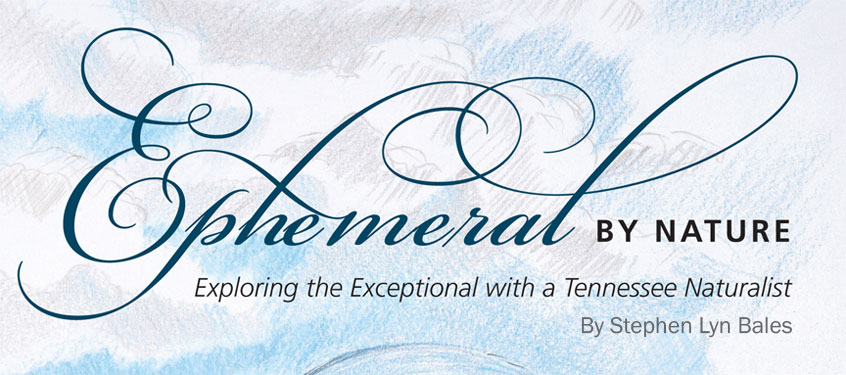•
 |
| Searching for ephemeral freshwater jellyfish beneath 400-million-year-old limestone at Mead's Quarry Lake. |
"All is in flux, nothing stays still."
Heraclitus, Greek philosopher (540 BC - 480 BC)
The events that occur in Ephemeral by Nature happened over the past 17 years and mirror the time I have spent as a naturalist at Ijams Nature Center in South Knoxville. Today, Ijams is a nonprofit education center. Carrying on the tradition of H.P and Alice Ijams, we have been connecting people to nature since the summer of 1923.
Along with the stories in my first UT Press book, Natural Histories, the happenings came and went, ephemeral all. Six years ago, I was sitting in a canoe alone on Mead's Quarry Lake watching freshwater jellyfish undulating just below the surface of the water all around me.
"Can there be anything more ephemeral?" I asked myself while admiring the penny size jellies live out their short medusa stage.
The paradox struck me. Although the flooded quarry pit was dug during the 1900s, the rock cliffs that surrounded me were Ordovician in origin, deposited over 400-million-years ago.
Therein lies the nub for this narrative. For the answer, of course, is that all of life is short lived. It was as fleeting for Heraclitus as it is for me.
"All the world's a stage, And all the men and women [and jellyfish] merely players; They have their exits and their entrances, And one man in his time plays many parts," wrote the Bard of Avon in As You Like It.
"Can there be anything more ephemeral?" I asked myself while admiring the penny size jellies live out their short medusa stage.
The paradox struck me. Although the flooded quarry pit was dug during the 1900s, the rock cliffs that surrounded me were Ordovician in origin, deposited over 400-million-years ago.
Therein lies the nub for this narrative. For the answer, of course, is that all of life is short lived. It was as fleeting for Heraclitus as it is for me.
"All the world's a stage, And all the men and women [and jellyfish] merely players; They have their exits and their entrances, And one man in his time plays many parts," wrote the Bard of Avon in As You Like It.
Luckily, I have a patchwork of memories and oodles of photographs of the past 17 years, far too many to ever be printed in the book itself. So to the left you will find photo albums that represent the chapters of Ephemeral.
Thank you for reading.
And thank you UT Press.
Thank you for reading.
And thank you UT Press.
 |
Freshwater jellyfish are near invisible penny-sized miracles of life.
Finding them in this 25-acre lake can be astonishingly difficult.
•


















































